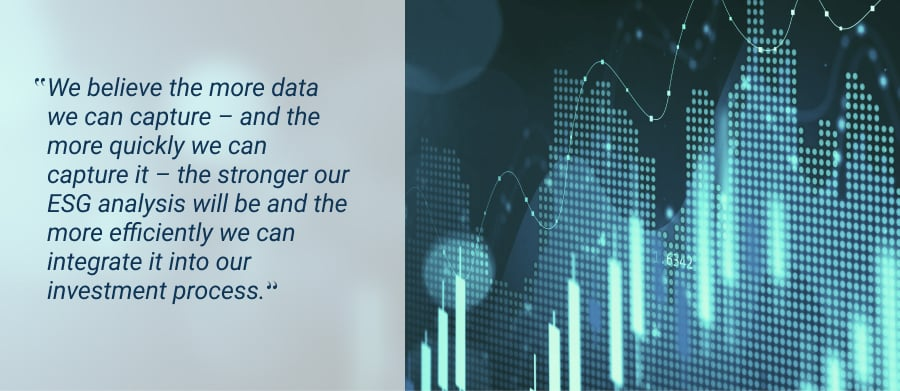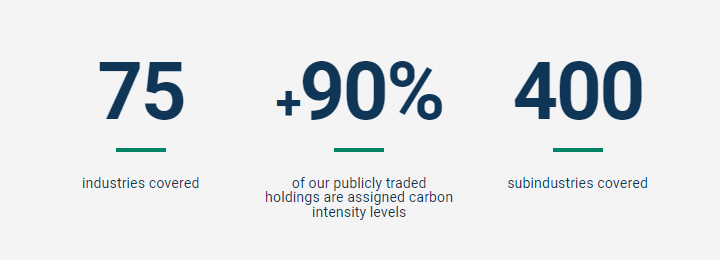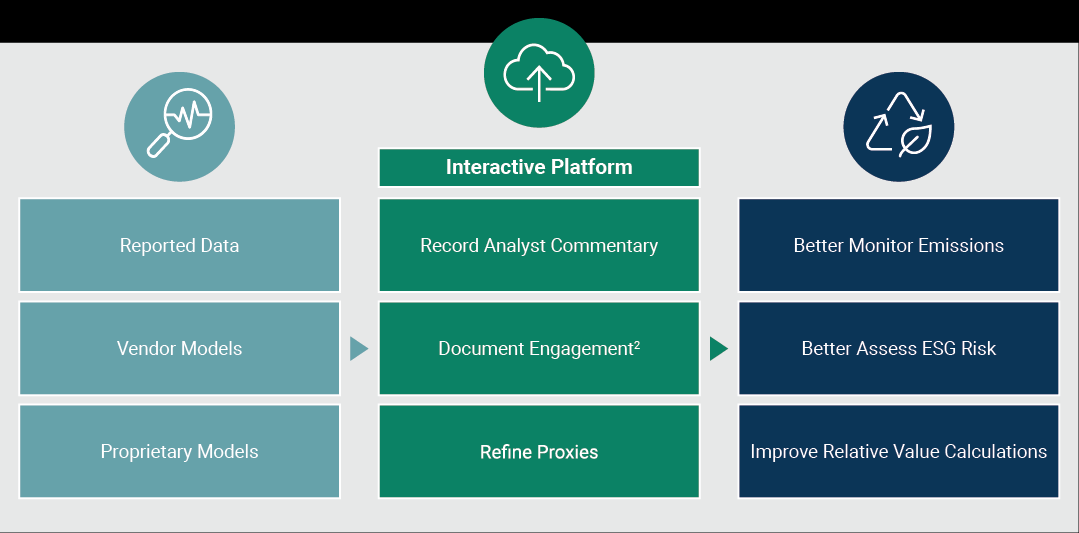Link para o artigo original : https://www.oaktreecapital.com/insights/insight-commentary/education/sustainability-in-action-carbon-data-minding-the-gaps
Sustainability in Action – Carbon Data: Minding the Gaps
“If you can’t measure it, you can’t manage it.” – attributed to Peter Drucker, management theorist
When evaluating any risk variable, asset managers need access to relevant, reliable data from a wide swath of industries and companies. But investors seeking to manage risk related to Environmental, Social, and Governance (ESG) factors have long faced a significant hurdle: incomplete data sets. This is certainly the case with greenhouse gas (GHG) emissions data – an area of focus for Oaktree.
Wayne Dahl, Investment Risk Officer, and Sid Dastidar, Head of Risk Modeling, recently sat down with Insights to discuss Oaktree’s efforts to fill these gaps and better integrate ESG data into assessments of risk and relative value.
The first tenet of Oaktree’s investment philosophy is the primacy of risk control. What role does data play in Oaktree’s approach to ESG risk management?
Wayne Dahl: Our risk management process is rooted in rigorous in-depth analysis at the company level, and this requires dependable data that we can track over time. That’s why we believe obtaining accurate, consistently sourced ESG data is so critical as we seek to better incorporate ESG factors into our investment process. And it’s why we’re focused on identifying the ESG metrics that are most relevant to our risk assessments.
It’s important to note that we’re not only looking at where a company currently stands in terms of ESG factors but also where management – and we – would like the company to be. Remember, data is both an input and an output: It can inform us about potential risk, but it can also define the objective we’re seeking to achieve. (Carbon emissions reduction targets are one obvious example of this.) But we can only track progress if we have reliable data.
Sid Dastidar: Ultimately, data helps guide the ESG conversation. It allows us to assess relative value, determine if our portfolio companies are making improvements or backtracking, and compare our performance to that of a benchmark. However, ESG data collection is uneven both in terms of what companies track and what they disclose. Moreover, companies often use different methodologies in their ESG assessments. For example, what firms choose to include in their calculations of scope 1, 2, or 3 emissions can differ considerably even among businesses in the same industry. Finally, companies and asset managers are still learning how to interpret newer ESG metrics and how to quantify the financial impact of all ESG factors.
One of the main areas of focus for Oaktree in recent years has been improving the quality and breadth of our GHG emissions data so that we can properly measure the carbon footprints of our portfolio companies and better assess risk related to carbon intensity. We’ve prioritized this area because we believe prudent long-term investors must consider the potential impacts of climate change and the energy transition. For example, businesses with high carbon intensities could end up with stranded assets or face the risk of obsolescence, while the changing climate itself creates heightened risk for producers in certain industries, such as agriculture or insurance, or in specific regions that may face more extreme weather patterns. Obviously, these risks are challenging to quantify, and we can’t know what the future will hold, but it’s still our responsibility to analyze and monitor these risks.
Describe Oaktree’s carbon-footprinting initiative. GHG emissions data is often incomplete, so how do you handle these gaps?
SD: Oaktree is seeking to provide our analysts and portfolio managers with a clear, comprehensive understanding of our investments’ carbon footprints.
In order to do this, it’s vital that we engage with management teams at our majority-owned companies so that we can encourage them to track and report their emissions data or provide more comprehensive data when possible.
When we don’t have easy access to management or publicly available carbon data, we must then use data approximations, including carbon intensity proxies. What this means is that we calculate carbon intensity scores for our investment companies using a proprietary model that analyzes third-party GHG emissions data, company-reported data, and industry estimates. This information is fed into our Carbon Emissions Dashboard, where it can be used by analysts and portfolio managers to monitor risk as well as progress related to emissions reduction targets. (See the Carbon Emissions Dashboard section for more details.)
WD: The asset management industry is still learning how to effectively use ESG metrics, including carbon intensity scores, as inputs in the investment process. While we all know how to assess the impact on valuation of traditional metrics like yield and duration, we’re still determining how best to incorporate ESG metrics into our models. We believe the more data we can capture – and the more quickly we can capture it – the stronger our ESG analysis will be and the more efficiently we can integrate it into our investment process. By doing so, we’ll generate even more comprehensive ESG data, creating a virtuous cycle.
SD: Some of our portfolio managers are already integrating carbon data into their analysis. They’re able to compare a portfolio’s aggregate carbon intensity to specific benchmarks and also determine how different investments with similar return potential rank based on their carbon footprints. We don’t exclude companies based solely on carbon data, but – like any other fundamental variable – carbon intensity can potentially help us determine an investment’s risk-adjusted return potential.

You mentioned data approximations. How do you handle these, and do they vary by asset class?
WD: While it’s important to refine the outputs from our models, we believe it’s crucial – first and foremost – that we eliminate gaps from our data sets, which means we must use proxies when company-specific data isn’t available. As we produce more data, we identify a larger number of specific points that need to be improved, and by making these refinements, we enhance the quality of our ESG data sets, which can ultimately help us produce better proxies – another virtuous cycle.
We’re developing a process to help with this that should work as follows. If I assign a proxy to, for example, a natural gas utility, the analyst covering the company might note that the score doesn’t reflect the company’s below-average emissions and thus that the score should be closer to that of a peer utility that has strong ESG practices. We’d integrate this feedback and create a proxy that would be more useful in our fundamental analysis. By doing so, we would also have a more reliable point of comparison when generating the next proxy. So we don’t expect the initial proxies to be perfect, but we do expect them to provide us with a basis for comparison. As an added bonus, this method of generating proxies forces analysts to make these assessments and thus refine their own understanding of ESG factors.
SD: We’re using this basic proxy creation process in our multi-asset portfolios, but the details vary by asset type. While we often use industry proxies for individual bonds and loans, the method is slightly different for structured credit. With collateralized loan obligations (CLOs), we aggregate the relevant carbon intensity scores of the underlying loans based on industry. With commercial mortgage-backed securities (CMBS), we use available information from corresponding publicly listed real estate investment trusts (REITs).
In order to create proxies, we’ve calculated average carbon intensities by industry and subindustry. We currently have collected data across roughly 75 industries and over 400 subindustries. 1 Because of our robust modeling and estimation capabilities, we’re now able to assign carbon intensity levels to over 90% of our publicly traded holdings. If we were relying solely on third-party vendors, our coverage would be much more narrow.

What are some of Oaktree’s key ESG data initiatives in 2023?
SD: We’re continuing to focus on improving data availability and accuracy. We’re planning to make both our Carbon Emissions Dashboard and our ESG platform as interactive as possible by giving analysts the opportunity to override and annotate the data. This will allow us to refine our data sets much more frequently, which should ultimately make them more robust. We’re also starting to track our ESG-related interactions to monitor the impact of engagement with companies over time.
WD: Another major area of focus this year will be strengthening data integration. We currently collect and monitor a tremendous amount of data related to various ESG factors. We’re now seeking to find ways to use this data more extensively in risk screening, relative value assessments, and the analysis of trends. Oaktree is continuously working to both improve the quality of our ESG data and refine our models. By doing so, we believe we can enhance our bottom-up analysis and thus our overall risk management – in keeping with Oaktree’s core investment philosophy.
ESG SPOTLIGHT: CARBON EMISSIONS DASHBOARD
In 2022, Oaktree launched the Carbon Emissions Dashboard, an innovative tool that enhances the firm’s ability to measure portfolio companies’ GHG emissions. The dashboard uses reported data, vendor models, and our proprietary models to track emissions for the majority of our portfolios containing publicly traded assets as well as many of our portfolios holding private investments. The data is stored on an interactive platform that is accessible to analysts who are able to refine the data.
The dashboard gives us the ability to record analyst commentaries and document engagement with public companies. We’re seeking to expand these capabilities so that we can better track our interactions with companies under our control, as these interactions tend to be more frequent given our access to management.
For select strategies, the carbon data is presented with risk/return projections that help us better integrate ESG criteria into our fundamental analysis.
In short, the dashboard allows us to more easily monitor the emissions levels of our current holdings and better assess ESG risk related to potential investment opportunities.

ENDNOTES
- 1Industry and subindustry classifications are based on Bloomberg Industry Classification Standard. The data is based on Oaktree calculations.
- 2We’re in the process of expanding our ability to document engagement. We’re not currently monitoring all engagement.
NOTES AND DISCLAIMERS
Unless otherwise indicated, investments discussed in the Sustainability in Action series are not, and were not, part of an ESG- or sustainability-focused fund.
This document and the information contained herein are for educational and informational purposes only and do not constitute, and should not be construed as, an offer to sell, or a solicitation of an offer to buy, any securities or related financial instruments. Responses to any inquiry that may involve the rendering of personalized investment advice or effecting or attempting to effect transactions in securities will not be made absent compliance with applicable laws or regulations (including broker dealer, investment adviser or applicable agent or representative registration requirements), or applicable exemptions or exclusions therefrom.
This document, including the information contained herein may not be copied, reproduced, republished, posted, transmitted, distributed, disseminated or disclosed, in whole or in part, to any other person in any way without the prior written consent of Oaktree Capital Management, L.P. (together with its affiliates, “Oaktree”). By accepting this document, you agree that you will comply with these restrictions and acknowledge that your compliance is a material inducement to Oaktree providing this document to you.
This document contains information and views as of the date indicated and such information and views are subject to change without notice. Oaktree has no duty or obligation to update the information contained herein. Further, Oaktree makes no representation, and it should not be assumed, that past investment performance is an indication of future results. Moreover, wherever there is the potential for profit there is also the possibility of loss.
Certain information contained herein concerning economic trends and performance is based on or derived from information provided by independent third-party sources. Oaktree believes that such information is accurate and that the sources from which it has been obtained are reliable; however, it cannot guarantee the accuracy of such information and has not independently verified the accuracy or completeness of such information or the assumptions on which such information is based. Moreover, independent third-party sources cited in these materials are not making any representations or warranties regarding any information attributed to them and shall have no liability in connection with the use of such information in these materials.
© 2023 Oaktree Capital Management, L.P.
Informações sensíveis e divulgação
Este memorando expressa as opiniões do autor na data indicada e tais opiniões estão sujeitas a alterações sem aviso prévio. A Oaktree não tem a obrigação de atualizar as informações aqui contidas. Além disso, a Oaktree não faz nenhuma representação, e não se deve assumir que odesempenho dos investimentos passados é uma indicação de resultados futuros. Além disso, onde quer que haja potencial de lucro, também existe a possibilidade de prejuízo. Este memorando está sendo disponibilizado apenas para fins educacionais e não deve ser usado para qualquer outro propósito. As informações contidas neste documento não constituem e não devem ser interpretadas como uma oferta de serviços de consultoria ou uma oferta de venda ou solicitação de compra de quaisquer títulos ou instrumentos financeiros relacionados, em qualquer jurisdição. Certas informações contidas neste documento sobre tendências econômicas e desempenho são baseadas ou derivadas de informações fornecidas por fontes terceirizadas independentes. A Oaktree Capital Management, L.P. (“Oaktree”) acredita que as fontes das quais tais informações foram obtidas são confiáveis; no entanto, não pode garantir a exatidão de tais informações e não verificou de forma independente a exatidão ou integridade de tais informações ou as suposições nas quais tais informações se baseiam. Este memorando, incluindo as informações aqui contidas, não pode ser copiado, reproduzido, republicado ou postado na íntegra ou parcialmente, em qualquer formato, sem o consentimento prévio, por escrito, da Oaktree.

